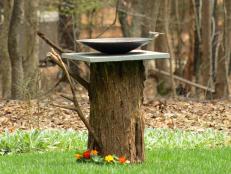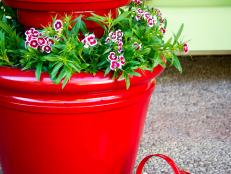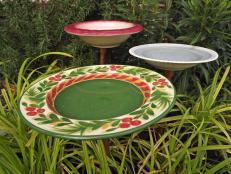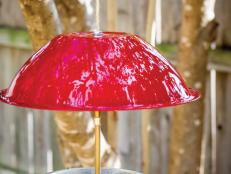1 / 15
Turn an Old Lamp Into a Birdbath
Turn a couple of old lamps and a trash bin lid into a super stylish birdbath. Your feathered friends will love a dip in this modern, upcycled piece. The trash bin lid makes a wide, yet shallow, basin perfect for a little splashing.












